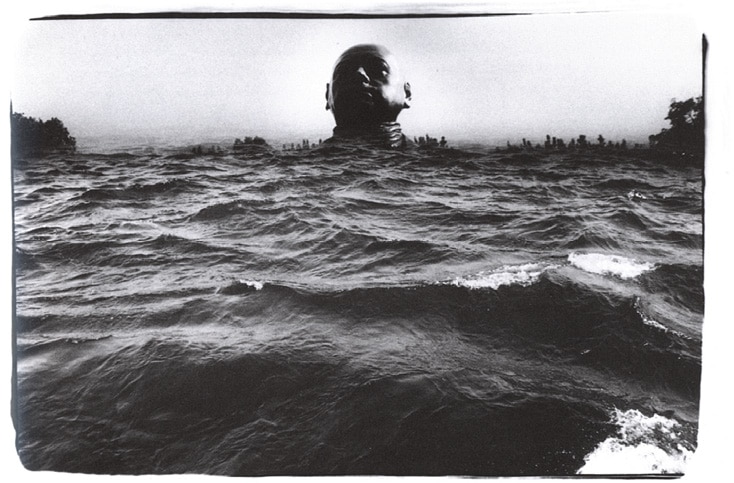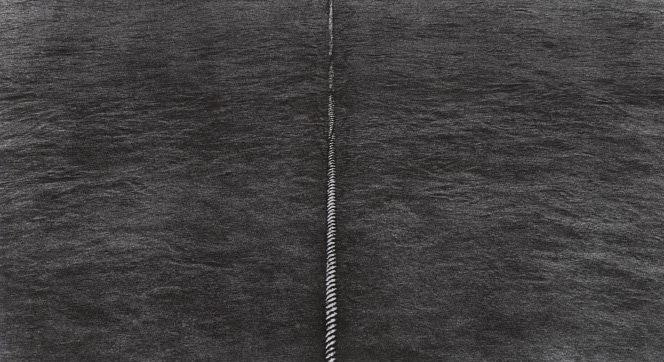Fotofest Houston
The tenth anniversary year of Fotofest Houston was carried out in the spirit of its supporting theme – Celebrating Water. The most prominent photography festival in North America took place for the tenth time this year. This biennale has exercised such an influence on all similar events worldwide that its history deserves a closer look. However, I will address the present year’s exhibition. The main themes in the past have often been based in an effort to broaden the scope of awareness and extend it to new, unknown territories of photography, thus presenting detailed surveys for example of the photography of Eastern Europe (1990), of Latin America (1994) and so on. Latin American photography in particular has been consistently presented by the curators of the festival – perhaps also because in Houston, and in Texas generally there lives a large Hispanic community, including many artists, photographers, and curators. The founders of the festival, Fred Baldwin and Wendy Watris, were among the first in the USA to take a serious interest in East European photography, and were largely instrumental in making it accessible to American viewers. Their surveys of the Asian photography scene – especially the virtually unknown photography of South Korea – also contributed fresh impulses to the usually exclusively Western-oriented perspective.
In other years, global themes have been chosen, such as the environmental question. Among other themes have been some specific areas of photography, e.g. Fashion. And in the preceding year of the festival, it was new technologies and digital media, the first world presentation of “Net-Art”. This year the organizers decided to go back to a global, timeless theme, as though they wanted to arrest the breakneck pace of world events. The theme Celebrating Water could lead one to expect an emphasis on primarily contemplative photographs, landscape or documentary. However, this theme also carried a danger for the narrowing of the horizons for the selection of interesting exhibitions. Fortunately it transpired that in the case of the best exhibitions, the curators understood the main theme merely as an inspiration, and tried to approach it from the most diverse perspectives.
As usual, a majority of the most interesting exhibitions took place in the seat of Fotofest, located in Vine Street. Of the exhibitions held there, the greatest revelations were three exhibitions by South Korean photographers – “Ocean” by Jungjin Lee, who prints her photographs on rice paper with hand-applied emulsion. Then “Fountain”, by Bohnchang Koo, who through a mirror multiplication of digitally-printed black and white photographs transposes them into geometrically symmetrical forms. A third representative of this oriental school of photographic contemplation is Han Sungpil, who in contrast to both of the above- mentioned artists, presented a collection of color images, entitled “The Sea I Dreamt, My Sea”. The South Korean participants of the festival confirmed the new quality of their vision, which had been a great surprise already at the large exhibition of South Korean photography in the previous Fotofest. Probably closest to them in concept were two Russian photographers, Andrej Chezhin with his collection “Nevsky Baptistry”, and Alexej Titarenko with “Time Standing Still”. As with the South Korean artists, both Russian photographers belong to the most prominent contemporary photographers in Russia, striving to find a contemplative, or in this case prehaps rather a poetic mode in their photographs. Still, both of their series seemed as though they had been created during the period of the interwar Russian avant-garde, their efforts at poetizing the theme, at rarefying it, a tad too strenuous. One did notice that these were older works, especially in the case of Chezhin. The problem with Tintarenko arises for a viewer who is already acquainted with his technique – working with strong grey filters in order to achieve a very long exposure rate. This method tends to grow monotonous, and its relentless repetition robs it of its novelty. One has to admit, though, that both artists presented approaches that distinguished them from most of the other projects on offer, and thus maintained their very own alternative vision outside the mainstream of Western photography. This in turn was frequently represented by striking color photographs which exploited the theme in a facile way. However, we should refrain from broad generalizations. An example of a radically different approach was found in the work of the British photographer Susan Derges, who in her unique show, held in the impressive space of the New World Museum, presented huge photograms exposed directly in seatide or in the steram of waterfalls,rivers and brooks. For me personally her exhibition was the most pleasant surprise of this year’s Fotofest. Some exhibitions, even if spiritually original and fascinating, felt grafted on to the theme somewhat artificially, but given the very narrow “water” theme they sometimes provided a necessary diversion. Among these were doubtless the exhibition of the Argentinan artist Helen Zout, “El Agua Como Tumba” (Water as a Graveyard), which dealt through allegory with a real event that took place during the military dictatorship in Argentina, when opponents of the regime were thrown into the rapids of the Rio De La Plata from airplanes.
Among other notable exhibitions organized directly by Fotofest was an exhibition in the Morgan Chase Bank titled “A Personal View”, which presented a mostly neo-pictorialist perspective on the theme of water, whether on the basis of digital or traditional photography processed by some peculiar alternative technique (Julia Hoerner, Courine Mercadier and other artists). Apart from exhibitions on the theme of water, there were a number of other events in Houston, of which the most important was probably the large-scale retrospective of the Manual group, consisting of the duo Ed Hill and Suzanne Bloom. The exhibition was prepared for the Museum of Fine Arts by the curator Anne Wilkes Tucker. Another significant exhibition in this museum was “Hungarian Avant-Garde Photographers” selected from the collection of Manfred Heiting that the museum acquired recently.
On the other hand, the famous museum, The Menil Collection, where Matthew Drutt held an exhibition of Luisa Lambri on the theme of the architectural interiors of conservatories and greenhouses proved a slight disappointment. Even if their rendition is decent, her large format color prints present nothing new. The German school mentioned in the catalogue of the exhibition (Thomas Ruff and Candida Höffer) remained an unattainable model in this case.
Among other shows of note, unconnected with the theme of water, were “We Are The Camera” at the Houston Center for Photography, dedicated to photograms with a personal, almost intimate subtext (Joy Gregory – “The Handbag Project Series”, n.1). Among commercial galle- ries, the most interesting exhibitions were held in the John Cleary Gallery: “Weegee, The Famous”, which certainly did not disappoint admirers of traditional photography. As usual, the exhibition in the Sicardi Gallery following the work of Latin American aritsts was also stimulating. This time it featured Oscar Muňoz. Impressive photographs of swimming pools composed the show of Luciana Abait entitled “Still Chambers” in the Mackey Gallery.
As always, “Discoveries Of The Meeting Place” at Erie City Ironworks excited much curiosity and attention. Since the very beginning, Fotofest Houston has consistently attended to the discovery of new faces in world photography, by enabling photographers to show their portfolios to invited curators, editors and other personalities, at a part of the accompanying program of the festival entitled “Meeting Place”. These then evaluate the most interesting discoveries, and based on their evaluation a large exhibition is put together the following year of the festival. This time “Meeting Place” presented among others also the duo Boris Missirkov and Georgi Bogdanov of Bulgaria, the American Bill Jorden, and Sian Bonnell from the UK.
In my experience the quality of works by authors who bring their work to “Meeting Place” has been steadily rising, and for me personally this year brought several discoveries, some of which we will feature in the pages of Fotograf.
This year’s Fotofest is past now, and everyone is curious what theme will reign over the festival in two years…
#4 Intimacy
Archive
- #45 hypertension
- #44 empathy
- #43 collecting
- #42 food
- #41 postdigital photography
- #40 earthlings
- #39 delight, pain
- #38 death, when you think about it
- #37 uneven ground
- #36 new utopias
- #35 living with humans
- #34 archaeology of euphoria
- #33 investigation
- #32 Non-work
- #31 Body
- #30 Eye In The Sky
- #29 Contemplation
- #28 Cultura / Natura
- #27 Cars
- #26 Documentary Strategies
- #25 Popular Music
- #24 Seeing Is Believing
- #23 Artificial Worlds
- #22 Image and Text
- #21 On Photography
- #20 Public Art
- #19 Film
- #18 80'
- #17 Amateur Photography
- #16 Photography and Painting
- #15 Prague
- #14 Commerce
- #13 Family
- #12 Reconstruction
- #11 Performance
- #10 Eroticon
- #9 Architecture
- #8 Landscape
- #7 New Staged Photography
- #6 The Recycle Image
- #5 Borders Of Documentary
- #4 Intimacy
- #3 Transforming Of Symbol
- #2 Collective Authorship
- #1 Face





